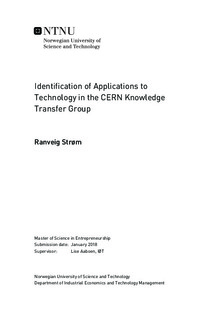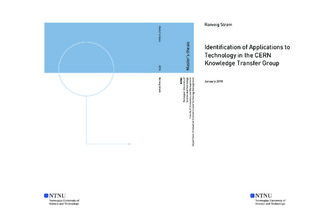| dc.description.abstract | The knowledge and technology from technology push environments may have great potential in whole other industries and markets, and thus, a key element for technology commercialisation is the identification of alternative application areas. However, application identification in a technology push context is theoretically underdeveloped, fragmented and in its embryonic stage.
Isern and Strøm (2017) found that especially the technology transfer literature treated application identification superficially. Hence, this study investigates the phenomenon in Technology Transfer Offices, through learning from research from other technology push environments. Furthermore, previous literature exposes two main approaches to application identification, exploitation and exaptation. Unifying the two different views is another recommendation, and therefore, as no former research within the technology transfer school mention exaptation, this view has gotten special attention.
A theoretical framework has been made in order to analyse the data, showing the relationship between exploitation and exaptation, as well as integrating the Resource Based View. By using the framework to investigate the underlying mechanisms of application identification in the CERN Knowledge Transfer group, as well as using the NTNU Screening Week as an embedded case, this thesis has contributed with new findings to the literature.
While the CERN Knowledge Transfer group does not focus much on application identification today, the group does not have the right capabilities nor sufficient resources to increase this focus. By exploiting external resources, more exaptive applications can be identified. However, due to limited absorptive capacity, not all identified applications will create sustained value. As a result, resources should be prioritised on initiatives that also aim to commercialise the opportunities in order to create sustained value. | |

